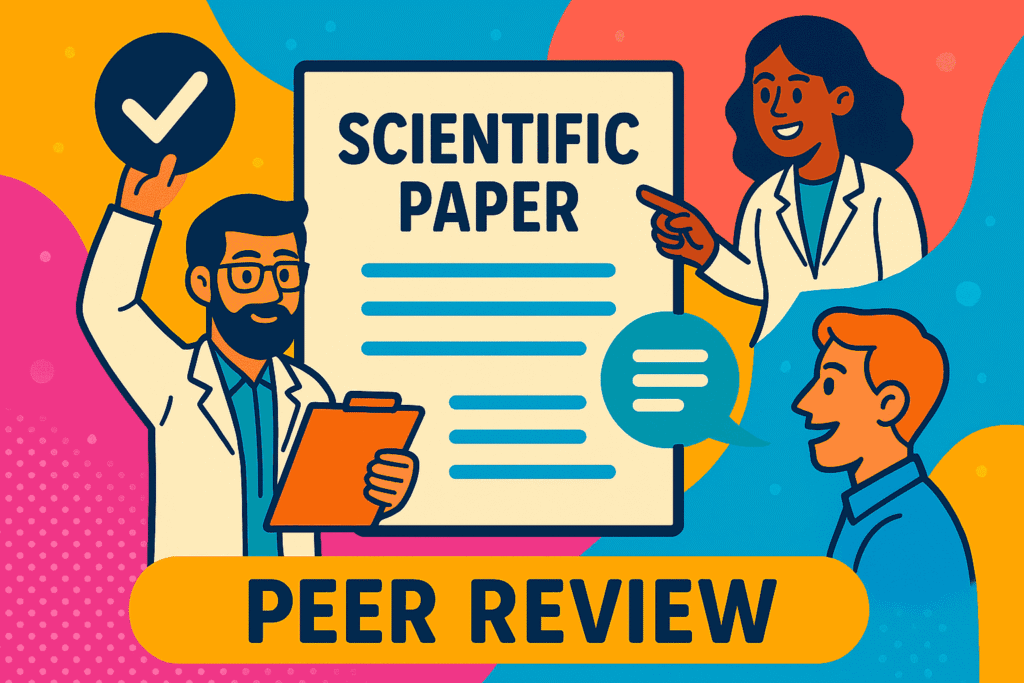The Peer-Review Process Explained

Peer review is the cornerstone of academic publishing, ensuring that only high-quality, credible research reaches the scientific community.
But for many researchers—especially early-career academics—the process remains a “black box.” How does it work? Why does it take so long? And how can you navigate it successfully?
This article breaks down the standard peer-review workflow, explains what reviewers and editors look for, and shares pro tips to speed up your publication timeline.
Why Peer Review is important?
Peer review acts as a quality control check for scholarly work by:
✅ Validating methods and conclusions
✅ Filtering out errors, bias, or fraud
✅ Improving clarity and impact through expert feedback
Without it, journals would publish unvetted claims, eroding trust in science.
General Steps Peer-Review
1. Submission & Initial Screening
After you submit your manuscript:
The journal editor checks for:
Scope fit (Is this right for the journal?)
Basic quality (Formatting, language, originality).
Desk rejection (30–80% of papers) happens if the paper fails these checks.
📌 Tip: Use journal templates and a professional editing service to avoid early rejection.
2. Reviewer Selection
Editors recruit 2–5 independent experts depending on the journal policy who:
Are anonymized (in single/double-blind review).
Have published in your field recently.
Declare conflicts of interest (e.g., collaborator rivalry).
⏳ Delays often occur here—reviewers are volunteers with busy schedules.
3. Peer Review (Time to take a break)
Reviewers evaluate your paper on:
Originality (Does this advance the field?)
Methodology (Are experiments rigorous?)
Clarity (Are results well-presented?)
They recommend:
Accept (Rare on first submission).
Minor/Major Revisions (Most common).
Reject (But may suggest resubmission).
4. Editorial Decision
The editor consolidates feedback and sends you:
A decision letter (Accept/Revise/Reject).
Reviewer comments (This is the scary part).
Pro Tip: Even rejections may include transfer offers to sister journals.
5. Revision & Resubmission
For “revise” decisions:
Address every comment in a point-by-point rebuttal letter.
Highlight changes in colored text or use Microsoft word track change option.
Return revisions by the deadline (or request an extension).
Most papers undergo 1–3 review rounds before acceptance. So, make it perfect at the first instance.
Types of Peer Review
Model | Reviewers Know You? | You Know Reviewers? |
Single-blind | Yes | No |
Double-blind | No | No |
Open review | Yes | Yes |
How Long Does It Take?
First decision: 2–12 weeks (varies by field, publisher, and journal).
Acceptance to publication: 2–5 weeks.
Delays happen if reviewers drop out or request new experiments.
Tips to Speed Up Peer Review
Pick the right journal (Check aims/scopes to avoid desk rejection).
Write a cover letter (Selling your paper’s significance.)
Suggest reviewers (But avoid collaborators).
Preempt critiques with a limitations section.
Respond politely to reviewer comments—even harsh ones.
Benefits of Being a Reviewer yourself
Early access to groundbreaking research.
Boost your CV (by evaluating/examining others work).
Improve your own writing (by critiquing others’.)
(Read our guide: The Hidden Benefits of Being a Journal Reviewer)
Ready to start reviewing?
Journal of Engineering Advancements is looking for potential reviewers in the following major fields:
- Aerospace Engineering
- Civil Engineering
- Computer Science and Engineering
- Electrical and Electronics Engineering
- Industrial and Production Engineering

